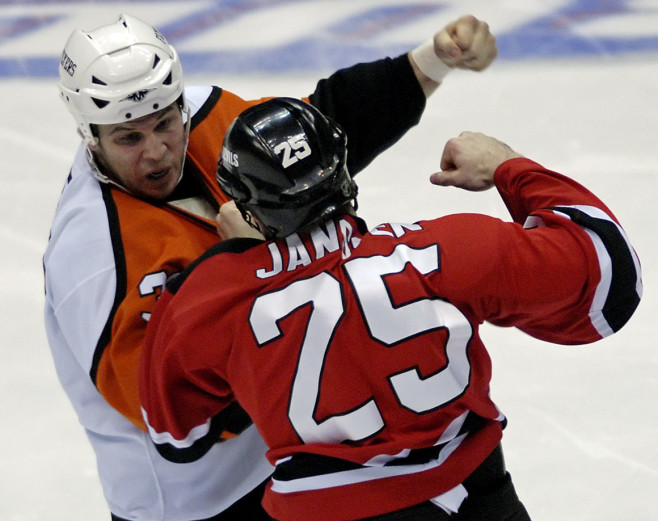During his Hall of Fame career for the Pittsburgh Steelers, Jack Ham was renowned as one of the canniest, fastest linebackers ever to play, doling out his share of bruising punishment to opposing ball carriers.
These days the man still celebrated as “The Hammer” has a very different relationship with pain: He’s committed to helping people treat it.
Ham is one of a number of Pennsylvania’s pro-athlete aristocracy, including Franco Harris, his former teammate on the Super Bowl-winning teams of the 1970s, who have quickly embraced medical marijuana as a cure for a scourge that has decimated economically depressed parts of the state: opioid addiction. It’s a cause that has special resonance for pro athletes like Ham because they know many players whose chronic injuries made them dependent on painkillers.
 When voters in Pennsylvania approved medical marijuana in 2016, Ham was quick to see both the financial promise of bringing a new industry to moribund coal country but also the therapeutic benefits of letting people manage their pain with a substance that some doctors say is less toxic and less addictive than opiate-based painkillers like Oxycodone.
When voters in Pennsylvania approved medical marijuana in 2016, Ham was quick to see both the financial promise of bringing a new industry to moribund coal country but also the therapeutic benefits of letting people manage their pain with a substance that some doctors say is less toxic and less addictive than opiate-based painkillers like Oxycodone.
Opioids, including heroin, kill 59,000 a year nationally and the number is climbing. Ham, who grew up in Johnstown, had watched the opioids ravage his home state. Roughly 1,400 people died from opioids in Pennsylvania in 2015. So when he was contacted by a startup medical marijuana company called Agrimed to be its spokesman, he was more than willing to lend his still-considerable name recognition to give it a boost.
”There’s got to be a better way. And I just knew half the medication that these guys were on,” he says. Two of his former teammates—Dwight White and LC Greenwood—died after surgeries they had had for back pain, and Ham says he just kept thinking, “What other things could they do to manage their pain?”
Ham lives in an enormous home outside Pittsburgh that is a cross between a Tudor hunting lodge and a new-age curiosity shop, all antlers and crystals. Ham, 6 feet, 2 inches, has a weathered face and a whole lot less hair than he did when he played 35 years ago. But the 68-year-old is 10 pounds lighter than his playing weight, the benefits of a macrobiotic diet. He is a minority owner of a junior hockey league team and does color commentary for Penn State football games. He invests in coal companies in Pennsylvania and West Virginia, but it’s medical marijuana where he sees the potential for real growth. In fact, Agrimed’s operation, a planned 80,000-square-foot greenhouse, is rising up from the gray slag of an abandoned mine.Ham adds, “I try to tell everybody – I’m not talking about, in my era, going to Woodstock and getting high. We’re talking about medical cannabis.”
AgriMed’s chief creative officer, Mark Kaminski, who grew up in western Pennsylvania, says that when his seventy-something aunt, who sings in the choir of her Catholic church, heard that Jack Ham was advocating for medical marijuana, she said, “Well, then, I’m behind it,” Kaminski says. “That’s relatable to her.”
Ham says he does not use medical marijuana himself, but he is not the only former athlete to tout medical marijuana as a solution to addiction. Former Steelers fullback Franco Harris also signed on to be a spokesman for a company that sought to grow medical marijuana in Braddock, an economically distressed former steel town near Pittsburgh.
“We have a unique opportunity to transform Braddock into a center for state-of-the-art urban agriculture and, at the same time, become a first mover in the United States in researching the efficacy of marijuana in replacing opioids for the long-term management of pain,” Harris said in a press release. Ultimately, that company did not get one of the 12 licenses awarded by the state in the first round.
Medical marijuana, which is now legal in 29 states, has many constituencies—cancer patients who appreciate how it tamps down nausea from chemotherapy; libertarians who favor decriminalization of drugs generally, among them. But athletes are one of the more notable groups. As Harris said in his press release: “The life of a professional football player is one intrinsically tied to long- term pain management.”Many pro athletes discovered the analgesic benefits of marijuana during their playing careers, which meant that they were violating their league’s drug policies as well as state and federal law. But now, as the trend toward legalization has picked up pace, those same athletes, now retired and free of their contractual obligations are beginning to speak out together. One of the lobbying groups is called Athletes for Care, an organization of former and current professional athletes who support medical marijuana. Former Philadelphia Eagles offensive guard Todd Herremans and former Philadelphia Flyers hockey player Riley Cote. Cote was connected to one of the 177 companies that applied for—but did not receive—a license to grow.
A former offensive guard with the Philadelphia Eagles, Herremans, 35, smoked pot to deal with his various injuries. He kept getting caught. Herremans was twice put on a two-year substance abuse program for marijuana use.
When he smoked pot, he says, he didn’t have to use anti-inflammatory drugs every morning and was able to cut back on both painkillers and alcohol. Since the drug testing was an annual thing, also, it was easy to get clean before the test. But somehow Herremans failed.
“The second time they said to me, ‘Todd, what’s going on? Did you forget about the test?’” He says he was surprised that it was such a big deal for the NFL, and was put on yet another two-year program.
When he left the NFL, he went back to using pot. “Some smart alecks said, you just want to keep smoking pot,” and so he retired, he says. “I just want it to be a healthier game.”

Using international research from 10,000 scientific abstracts, however, a January 2017 report from the National Academy of Sciences found some evidence that use of medical marijuana was effective in treating chronic pain. It also could be used to prevent patients from building up a tolerance to the more addictive and powerful prescription drugs, says Carlini. In addition, a 2014 study reported in the Journal of the American Medical Association found that opioid overdose-related deaths would increase by 25 percent if medical marijuana was prohibited in the 29 states and District of Columbia that have legalized it.
Pro athletes, however, don’t need studies to know that marijuana helped them deal with the pain that came with the job—and without the dangerous side effects of prescription painkillers.
Riley Cote was an enforcer for the Philadelphia Flyers, assigned the brutal duty of defending his team’s star players by any means necessary, usually fighting. That often meant smashing his bare fists against another player’s helmeted head.

“I was constantly battling pain and inflammation, and that’s when I started becoming passionate about cannabis,” he says. Growing up in Canada, he was comfortable using pot in what he calls “extreme recreational settings.” Later he started understanding the drug’s therapeutic effects, helping him with pain, anxiety, and insomnia.
“Cannabinoids are the ultimate recovery tool,” he says. The prohibition of cannabis is the cause of the opioid epidemic, he says.
Today Cote, 35, says he feels better than he ever did. He weighs about 20 pounds less than he did when he swung a hockey stick, he eats a mostly plant-based diet, and has gotten into yoga.
“I spent my whole life being a meathead,” he says. “Now my mental clarity and mental health is as good as it’s ever been.”
AgriMed’s Kaminski says that although the company’s application promised an initial greenhouse covering 80,000 square feet, that size operation is impossible to achieve by the state’s December 20 deadline for being operational. (Kaminski adds that the state is likely to give companies an extension if they can prove by that point that they are “making good progress,” he says. A temporary building on the site will be about 20,000 square feet (growing about 4,000 plants initially).. The company plans to invest at least $25 million in the site and projects, in the beginning, to create 60 new jobs.
There’s no telling just how many ill Pennsylvanians will go through the process of getting medical marijuana, which involves a certification from their doctor as a result of one of the 17 conditions – everything from glaucoma to autism – that the state says could be treated with cannabis. There’s also been some concern that even with patients signing up, not enough doctors will take the four-hour training needed to provide the certification. The marijuana will be processed into pills, ointments and oils, not for smoking.
“We’re not going to put up a 160,000-square-foot building, if there’s no demand for it,” Kaminski says.
credit:politico.com



